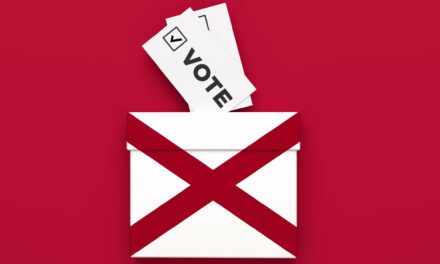We support our Publishers and Content Creators. You can view this story on their website by CLICKING HERE.
When the U.S. Supreme Court issued its monumental decision in 2023 telling colleges and universities that “yes,” they did have to comply with the equal protection clause of the 14th Amendment in their admissions policies, the question immediately arose of whether they would comply or cheat.
With the latest admission numbers from schools such as Duke, Princeton, and Yale, however, we still don’t know the answer.
In June of 2023, in Students for Fair Admissions v. Harvard and the University of North Carolina, the Supreme Court held that the academy had to end its pernicious policy of discriminating on the basis of race in deciding whether to admit students. The colleges argued they need to discriminate to achieve “diversity,” a practice based, as Chief Justice John Roberts said, on the “offensive and demeaning assumption that [students] of a particular race, because of their race, think alike.”
“Universities,” the court held, “have for too long” not treated students as individuals, but have “concluded, wrongly, that the touchstone of an individual’s identity is not challenges bested, skills built, or lessons learned, but the color of their skin. Our constitutional history does not tolerate that choice.”
The response by the universities to the many criticisms of these discriminatory practices, which included their using overbroad, underinclusive, and arbitrary racial categories, said the court, was “trust us.”
So, can we trust them, or have they been practicing a latter-day form of “massive resistance” to complying with the Students for Fair Admissions decision and the constitutional requirement to treat their students equally, without regard to skin color?
Keep in mind that the students who sued Harvard and the University of North Carolina were Asian Americans, who were discriminated against to keep their numbers down in the admitted classes of schools such as Harvard, UNC, Yale, Duke, and Princeton, among many others.
Despite having higher test scores and better academic credentials than other applicants, they were being disproportionately kept out of these schools, and by a wide margin.
Duke, Yale, and Princeton, along with 13 other schools, filed an amicus brief in the case claiming that if the Supreme Court eliminated their ability to discriminate, they would not be able to maintain the diverse composition of their student bodies. Instead, they would have a “racially and ethnically homogenous class”—i.e., the proportion of minority students (anyone who isn’t Asian or white) within the student population would decrease.
The universities’ “consideration of race and ethnicity in admissions avoids this outcome,” they said, warning that if they could not consider race, there would be, for example, “a near 33% reduction in the number of African American students admitted” and similar reductions for other “underrepresented” minority groups.
Relevant to all of this are the recent race statistics released by some schools for the Class of 2028. Yale, for example, which was discriminating against Asian American students, just like Harvard and UNC, engineered a 6-percentage-point drop in the admission of Asian American students, which went from 30% in the Class of 2027 to only 24% in the Class of 2028. On the other hand, the percentage of black and Native American students was unchanged.
Similarly, at Princeton, the percentage of Asian American students fell from 26% to 23.8%, and at Duke, from 35% to 29%.
These numbers suggest that the schools are either cheating, or that they lied to the Supreme Court when they said that a victory for Asian Americans at Harvard “would undercut [their] vital efforts to attain diverse student bodies.”
As it turns out, the schools have had no trouble attaining what they call “diverse” student bodies; that is, a student body where fewer Asian American students get in than deserve to.
So, did they lie to the Supreme Court? Or did they figure out how to cheat?
There’s reason to think that they may be cheating. For one thing, influential left-wing deans and professors have been explicit about getting around the decision.
For example, Dean Erwin Chemerinsky of the University of California at Berkeley Law School, and Timothy Lynch, general counsel of the University of Michigan, recently hosted an event in which they discussed how they hide their desire to racially balance their student bodies behind a “race-neutral explanation.” (Chemerinsky was previously caught on tape laughing about how he circumvents a law against using race in faculty hiring.)
Meanwhile, President Danielle Holley of Mount Holyoke College publicly declared that her school still thinks it’s important to racially balance its student body, and so the schools’ admissions process “will have to” be less transparent.
What’s more, the Biden-Harris administration issued guidance to help schools carefully circumvent the ruling, and left-wing academics have begun acclimatizing the public to the idea of openly disobeying Supreme Court opinions they don’t like.
Schools might be cheating in many ways. They might, for example, encourage applicants to disclose their race in essays. Or they might require or encourage applicants to submit photos or to do application interviews from which their race can be determined. Or universities might give advantages and disadvantages to applicants from ZIP codes or high schools where students of one race or another tend to congregate.
The organization behind the Supreme Court victory against Harvard and UNC has put these schools on notice that they are its next target. And the next time that the Justice Department is controlled by people who aren’t racial ideologues, these schools may well be targets of the federal government, too.
We hope, however, that these schools will agree, without coercion, that racial discrimination is illegal, unconstitutional, and immoral. But we aren’t holding our breath.

 Conservative
Conservative  Search
Search Trending
Trending Current News
Current News 





